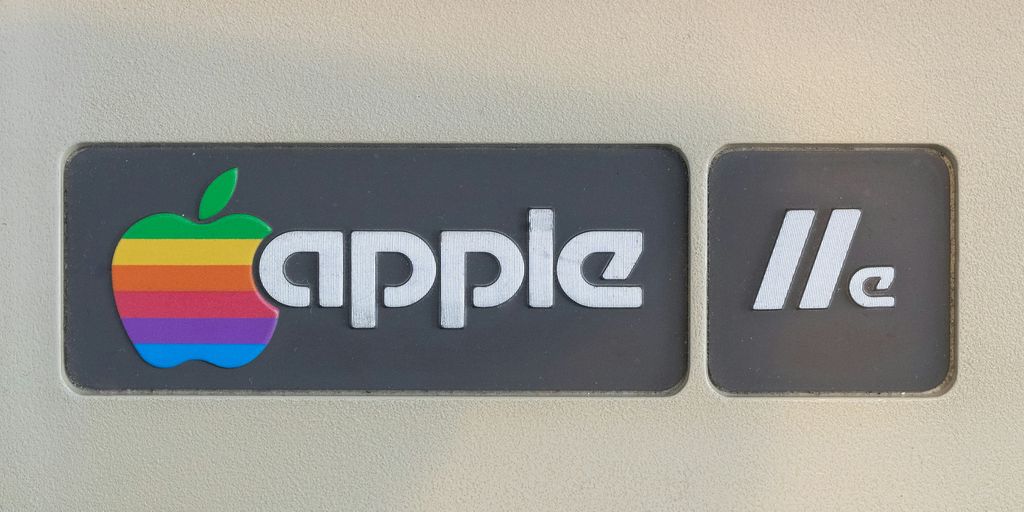So, we’re going to talk about this big legal case, United States v. Apple Inc. It’s all about whether Apple did something wrong in the e-book market. Basically, the government said Apple teamed up with publishers to mess with e-book prices. This whole thing brings up a lot of questions about how companies should compete, especially in new markets. We’ll look at what happened, what the courts decided, and what it all means for the future of business and competition.
Key Takeaways
- The case centered on whether Apple conspired with publishers to fix e-book prices, which is a big deal in antitrust law.
- Courts had to decide if Apple’s actions were illegal on their face (per se) or if they needed a deeper look at the market effects (rule of reason).
- Apple argued it was actually helping competition by breaking up Amazon’s near-monopoly in e-books.
- The legal battle showed how tricky it is to apply old antitrust rules to fast-changing tech markets.
- This case has lasting effects on how the government views competition and new market entries, especially when a dominant player is involved.
Understanding the Core Allegations in United States v. Apple Inc.
Apple’s Role in E-Book Price Fixing
So, the big question in United States v. Apple Inc. is whether Apple conspired with publishers to raise e-book prices. It’s a pretty involved situation. The core allegation is that Apple worked with several major publishing houses to undermine Amazon’s dominance in the e-book market. The government argued that Apple facilitated a scheme where publishers could collectively force Amazon to abandon its lower pricing model. This allegedly led to higher prices for consumers. It’s like Apple walked into a room full of publishers already unhappy with Amazon and said, "Hey, I have an idea…"
The Horizontal and Vertical Arrangements
Okay, so what’s the deal with "horizontal" and "vertical" arrangements? Basically, the government claimed Apple was involved in both. A horizontal arrangement would be the publishers colluding among themselves to fix prices. A vertical arrangement is Apple, at a different level of the supply chain, coordinating with those publishers. The claim is that Apple facilitated the horizontal conspiracy by entering into agreements with each publisher individually. These agreements, while seemingly vertical, allegedly served to enable the publishers’ horizontal price-fixing efforts. It’s like Apple was the middleman, making sure everyone was on the same page, even though they were supposed to be competing.
Challenged Conduct and Market Impact
What exactly did Apple do that was so bad? Well, the main thing is the introduction of the "agency model." Under this model, publishers set the price of e-books, and Apple took a commission. This was different from Amazon’s model, where Amazon set the price. The government argued that Apple knew this would lead to higher prices and that it intentionally designed the agreements to achieve that outcome. The impact? E-book prices went up, and Amazon’s market share was threatened. It’s like Apple threw a wrench into the gears of the e-book market, and consumers ended up paying the price. The government’s view on below-cost pricing is that it can be harmful to competition, especially when it’s used to stifle innovation or drive out smaller players.
The Rule of Reason Versus Per Se Analysis in Antitrust Law
In antitrust law, determining whether a business practice is illegal often comes down to choosing the right analytical framework. Two primary methods exist: the rule of reason and the per se rule. The choice between them can significantly impact the outcome of a case. It’s like deciding whether to give someone a detailed trial or an immediate sentence.
Applying the Rule of Reason to Apple’s Actions
The rule of reason is the standard approach. It requires a court to examine all the circumstances of a case to decide whether a restrictive practice imposes an unreasonable restraint on competition. This involves looking at the specific facts, the business conditions, and the effects of the restraint. Think of it as a deep dive into the market. The court weighs the pro-competitive effects against the anti-competitive effects. This can be a lengthy and complex process. For example, in United States v. Apple Inc., applying the rule of reason would mean analyzing the actual impact of Apple’s agreements with publishers on e-book prices and market competition. Did it truly harm consumers, or did it have some benefits?
Critiquing the Per Se Condemnation
In contrast to the rule of reason, the per se rule applies to practices that are so obviously anti-competitive that they are automatically deemed illegal, without extensive analysis. Classic examples include horizontal price-fixing agreements among competitors. The idea is that these practices almost always harm consumers and rarely have any redeeming qualities. Critics of the per se condemnation in the Apple case argue that the e-book market was unique. They say that Apple’s actions, while perhaps involving some level of agreement with publishers, were ultimately aimed at disrupting Amazon’s dominance and fostering competition. Applying the per se rule, they contend, ignores the potential pro-competitive effects of Apple’s entry into the market.
Economic Effects of Challenged Practices
Understanding the economic effects of the challenged practices is crucial. Did Apple’s actions lead to higher prices for consumers in the long run? Did they stifle innovation or reduce the number of e-books available? Or, did they create a more competitive market with more choices and potentially lower prices over time? These are the kinds of questions that need to be answered. The debate often centers on whether Apple’s entry into the e-book market was a net positive or a net negative for consumers and the publishing industry. Some argue that Amazon’s below-cost pricing was unsustainable and that Apple’s actions were necessary to create a more level playing field. Others contend that Apple’s agreements with publishers artificially inflated prices and harmed competition. Ultimately, the economic effects are complex and subject to different interpretations.
Examining Apple’s Pro-Competitive Justifications
Apple, facing accusations of antitrust violations, presented several arguments suggesting its actions were actually beneficial for competition. It’s a complex situation, and understanding these justifications is key to seeing the whole picture.
Breaking Amazon’s Monopoly in E-Books
One of Apple’s main points was that it was trying to break Amazon’s dominance in the e-book market. Amazon had a huge share, and Apple argued that its entry helped to level the playing field. They claimed Amazon’s pricing strategy, particularly its below-cost pricing, was unsustainable and anti-competitive in itself.
Think of it like this:
- Amazon controlled a massive portion of the market.
- Their pricing made it hard for others to compete.
- Apple’s entry provided an alternative.
Deconcentrating the E-Book Retail Market
Apple contended that its actions led to a more diverse and competitive e-book retail landscape. Before Apple entered the market, Amazon had significant control. After Apple’s entry, other retailers had a better chance to compete, leading to more choices for consumers. This market entry was crucial for deconcentrating the market.
Removing Barriers to Entry for Competitors
Apple also argued that it removed barriers that prevented other companies from entering the e-book market. Amazon’s existing dominance and pricing strategies made it difficult for new players to get a foothold. By changing the pricing model and offering a new platform, Apple made it easier for others to compete. It’s like they lowered the gate, allowing more people to join the race. The government’s view on below-cost pricing was also a factor in this situation. Here’s a quick summary:
- Amazon’s dominance created a barrier.
- Apple’s entry reduced that barrier.
- More competition resulted from this reduction.
The District Court’s Findings and Subsequent Appeals
Initial Rulings and Antitrust Injunction
The district court, after a bench trial, made some pretty significant findings against Apple. The court determined that Apple had violated Section 1 of the Sherman Act by conspiring with publishers to raise e-book prices. This was a big deal. The judge issued an antitrust injunction aimed at preventing Apple from engaging in similar anticompetitive behavior in the future. The injunction included restrictions on Apple’s ability to enter agreements that would limit its pricing authority. It also appointed a monitor to oversee Apple’s compliance, which Apple really didn’t like.
Appellate Court’s Review of Factual Findings
Apple, of course, appealed the district court’s decision. The appellate court reviewed the factual findings for clear error and the legal conclusions de novo. Basically, they looked closely at whether the facts supported the lower court’s decision and whether the law was applied correctly. The appellate court largely upheld the district court’s findings of fact, accepting them as a basis for their legal analysis. One point of contention was Amazon’s below-cost pricing strategy, with some judges questioning whether the district court’s assessment was fully supported by the record.
Disagreement on Legal Conclusions
While the appellate court affirmed the district court’s judgment, there was some disagreement among the judges regarding the legal conclusions. One judge filed a separate concurring opinion, joining in the judgment but disagreeing with a specific part of the majority opinion. Another judge filed a dissenting opinion, indicating a fundamental disagreement with the court’s overall conclusion. The core of the disagreement seemed to revolve around the interpretation of Apple’s actions and their impact on e-book retail competition, as well as the appropriateness of the remedies imposed by the district court. The appellate court did reject Apple’s argument that the injunction unlawfully modified consent decrees or should be judicially estopped. They also didn’t buy Apple’s arguments against the appointment of a monitor, deeming those arguments forfeited due to insufficient argumentation.
Market Dynamics and Competitive Landscape
Amazon’s Dominance and Below-Cost Pricing
Back in the day, Amazon was the place for e-books. They had a crazy hold on the market, like 90%! A big part of that was their pricing strategy. They sold bestsellers super cheap, sometimes even for less than they paid the publishers. It was a way to get people hooked, but it made it tough for anyone else to get in the game. It’s like, how do you compete with someone who’s practically giving stuff away? This market dominance made publishers nervous, because they felt like Amazon had all the power.
Apple’s Entry and Market Disruption
Then Apple came along with the iPad and the iBookstore. They wanted in on the e-book action, but they weren’t about to lose money on every sale. So, they came up with a different plan: the agency model. Basically, the publishers got to set the prices, and Apple took a cut. This shook things up because it gave publishers more control and created a more level playing field. It wasn’t just about undercutting Amazon; it was about changing the whole game. Apple’s entry was a big deal because it forced Amazon to rethink its strategy. It was a classic case of a new player disrupting the status quo.
The Impact on E-Book Retail Competition
So, what happened after Apple jumped in? Well, prices went up, at least for a while. But the big picture is that the e-book market became way more competitive. It wasn’t just Amazon calling all the shots anymore. Publishers had more options, and readers had more places to buy their books. Some people argue that the price increases were bad for consumers, but others say that the increased competition was worth it in the long run. It’s a tricky balance, but it’s clear that Apple’s entry changed the e-book landscape for good. Here are some key changes:
- More retailers entered the market.
- Publishers gained more negotiating power.
- Amazon’s dominance decreased.
Antitrust Doctrine and Market Innovation
Balancing Restraint and Pro-Competitive Outcomes
Antitrust law aims to strike a balance. It’s about preventing actions that stifle competition while also allowing for innovation and market disruption. It’s a tricky thing to get right. The goal is to promote consumer welfare, which sometimes means allowing companies to gain significant market share through legitimate means. It’s not about punishing success, but about preventing the abuse of market power.
The Role of Litigation in Market Entry
Should companies have to sue before they can compete? That’s a question that comes up a lot. The reality is that litigation is slow and expensive. In fast-moving tech markets, waiting for a court decision can mean missing the boat entirely. Consider these points:
- Litigation is time-consuming, often taking years.
- Legal costs can be substantial, creating a barrier to entry.
- Market conditions can change rapidly during litigation, rendering the case moot.
It’s a tough call, but sometimes, companies feel they have no choice but to take matters into their own hands. It’s a bit like marketplace vigilantism, but sometimes it’s the only way to survive.
Implications for New Technologies and Industries
Antitrust law needs to keep up with the times. New technologies and industries present unique challenges. What worked for railroads or oil companies might not work for e-books or mobile apps. The key is to focus on the underlying principles of antitrust law – promoting competition and protecting consumers – and apply them in a way that makes sense for the specific industry. It’s about antitrust enforcement in the digital age. We need to consider:
- Network effects: How does the value of a product or service increase as more people use it?
- Data as a competitive advantage: How does access to data affect competition?
- The role of platforms: How do platforms like app stores and social media sites affect competition?
These are tough questions, and there are no easy answers. But it’s important to keep asking them if we want to ensure that antitrust law continues to promote innovation and benefit consumers.
The Government’s Stance and Policy Implications
Government’s View on Below-Cost Pricing
The government’s perspective on below-cost pricing, particularly Amazon’s strategy, was a point of contention. Initially, the Department of Justice (DOJ) seemed to regard it as "good for consumers," a stance that raised eyebrows among antitrust observers. This view appeared to contradict traditional antitrust doctrine, which often views predatory pricing with suspicion. The government’s apparent reluctance to challenge Amazon’s pricing created a complex situation, leaving Apple to address the issue through its own market entry. It’s a bit weird, right? The government is supposed to protect competition, but here they were, seemingly okay with a dominant player undercutting everyone else.
Concerns Over Marketplace Vigilantism
The government also expressed concerns about "marketplace vigilantism," which is basically when a company takes matters into its own hands to correct what it perceives as anticompetitive behavior. While Apple argued that it was simply trying to break Amazon’s monopoly, the government worried that allowing companies to collude to fix prices could set a dangerous precedent. The DOJ was worried that if they let Apple get away with it, other companies might start doing the same thing, leading to more price-fixing and less competition overall. It’s a tricky balance, because you want companies to be able to compete, but you don’t want them to break the law in the process.
The Broader Impact on Antitrust Enforcement
This case has significant implications for antitrust enforcement, especially in rapidly evolving tech markets. The government’s approach to the Apple case could influence how future antitrust cases are handled, particularly those involving innovative industries and disruptive business models. The case highlights the challenges of applying traditional antitrust principles to new technologies and the need for a nuanced approach that considers both the potential for anticompetitive behavior and the benefits of market innovation. It also raises questions about the role of litigation as a market alternative, especially in industries where the pace of technological change is faster than the legal process. Like, should companies be forced to sue instead of just competing? That seems kinda backwards. The government’s stance in this case could shape future antitrust policy for years to come.
Conclusion
So, what’s the big takeaway from all this talk about United States v. Apple Inc.? It really shows how tricky these antitrust cases can get, especially when new tech comes into play. The court had to figure out if Apple was just trying to compete in a tough market or if they were doing something wrong. It’s not always a clear-cut answer. This case makes you think about how companies should act when they’re trying to break into a market dominated by someone else. It also highlights how important it is for the law to keep up with how business works today. The outcome here could definitely shape how other big tech companies are looked at in the future, and that’s a pretty big deal for everyone.
Frequently Asked Questions
What was the main idea behind the United States v. Apple Inc. lawsuit?
The lawsuit, United States v. Apple Inc., was about whether Apple worked with book publishers to raise the prices of e-books. The government believed this was illegal price-fixing, which is a big no-no in business. Apple said they were just trying to make the e-book market fairer, especially since Amazon had a huge hold on it.
What’s the difference between “per se” and “rule of reason” in antitrust cases?
Antitrust law has two main ways to look at cases: “per se” and “rule of reason.” “Per se” means something is automatically illegal, like clear price-fixing. “Rule of reason” means you have to look at all the details to see if something is bad for competition or actually helps it. The court had to decide which way to judge Apple’s actions.
Why did Apple say their actions were good for competition?
Apple argued that they were actually helping competition. They said Amazon had a near-monopoly on e-books and was selling them so cheaply that no one else could compete. Apple claimed their actions helped break Amazon’s power, allowing more companies to sell e-books and giving customers more choices.
What happened in the courts with Apple’s case?
The first court to hear the case, the District Court, decided that Apple was guilty of breaking antitrust laws and put rules in place to stop them. But when Apple appealed, higher courts looked at the case again. They didn’t always agree on everything, especially whether Apple’s actions were truly illegal.
How did Amazon affect the e-book market before Apple came along?
Before Apple got involved, Amazon was the king of e-books, selling almost all of them, often at very low prices. When Apple entered the market, things changed. Apple’s move shook up how e-books were sold and how much they cost, leading to a lot of debate about whether this was good or bad for the overall e-book business.
What does this case mean for new businesses and competition?
This case shows how tricky it is to balance stopping bad business practices with allowing new ideas and companies to grow. It raises questions about when the government should step in and whether lawsuits help or hurt new businesses trying to enter a market, especially in fast-changing tech industries.














